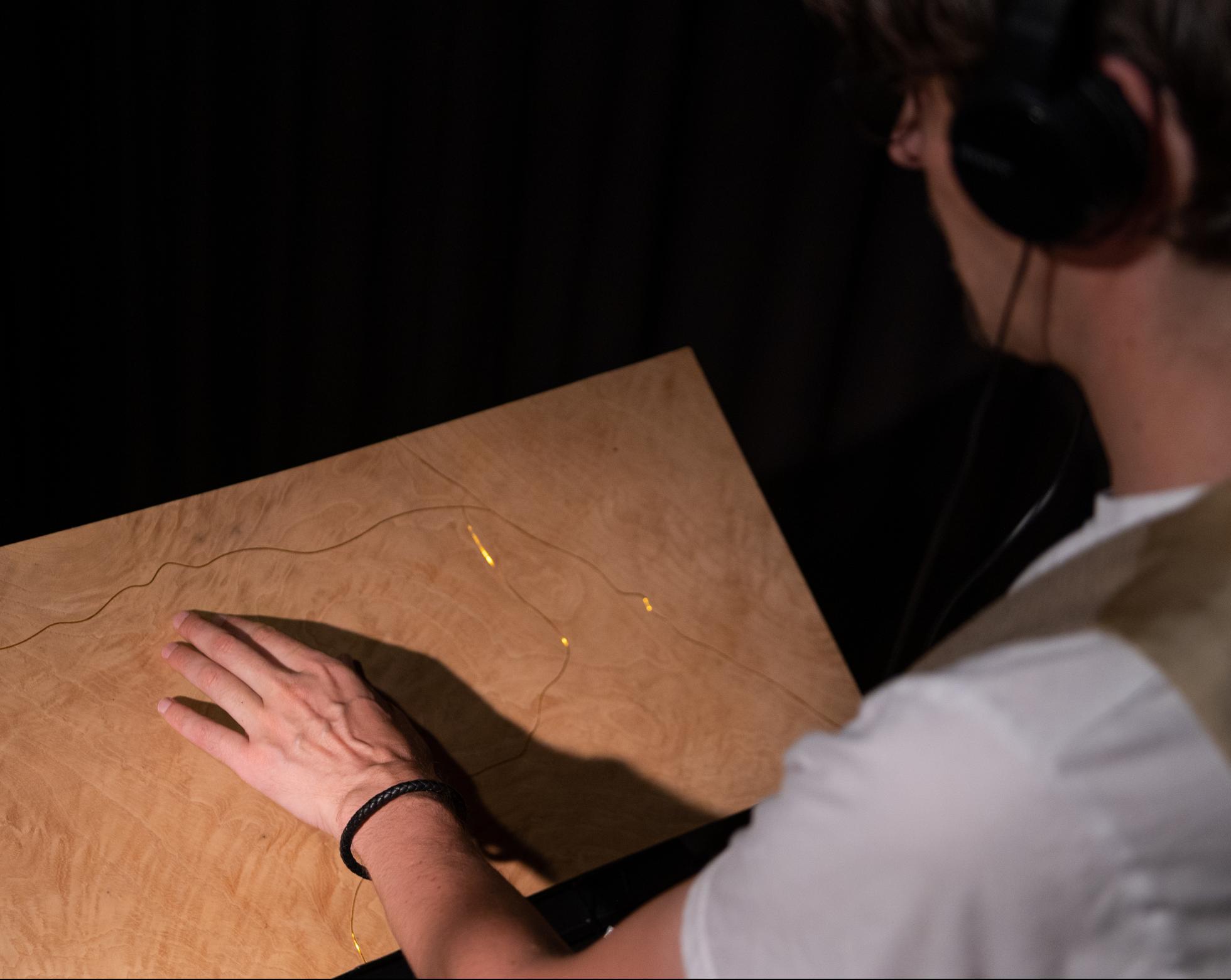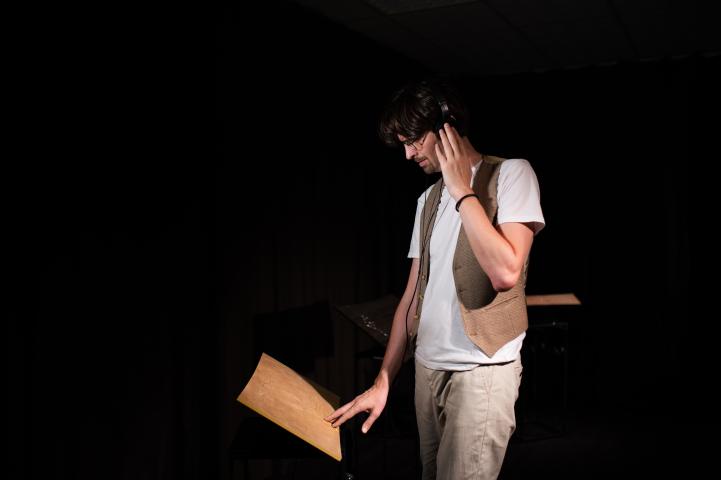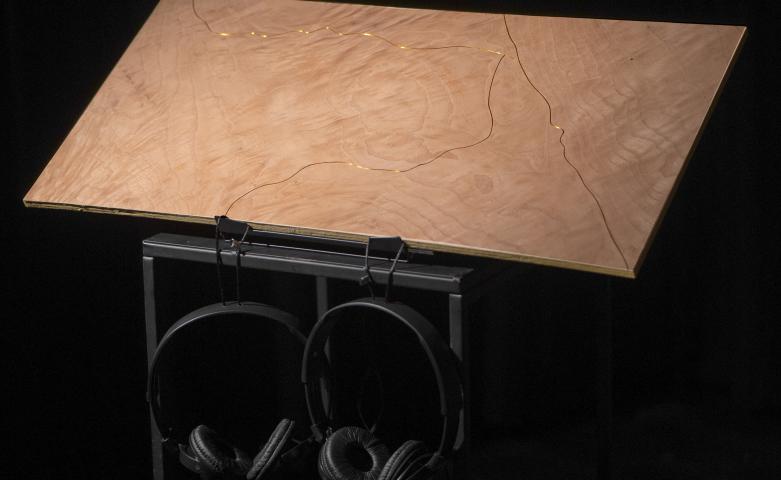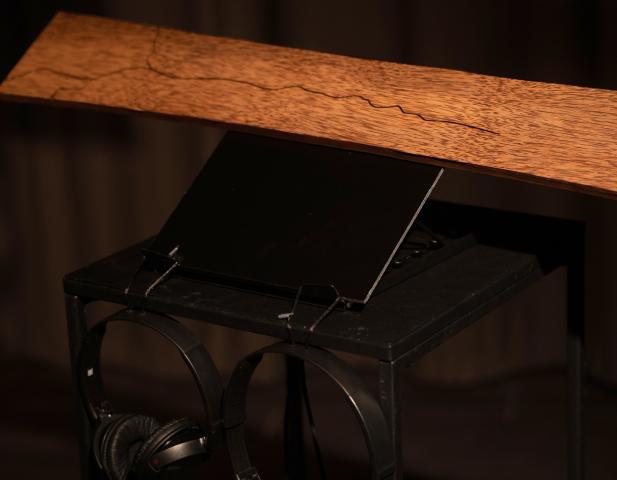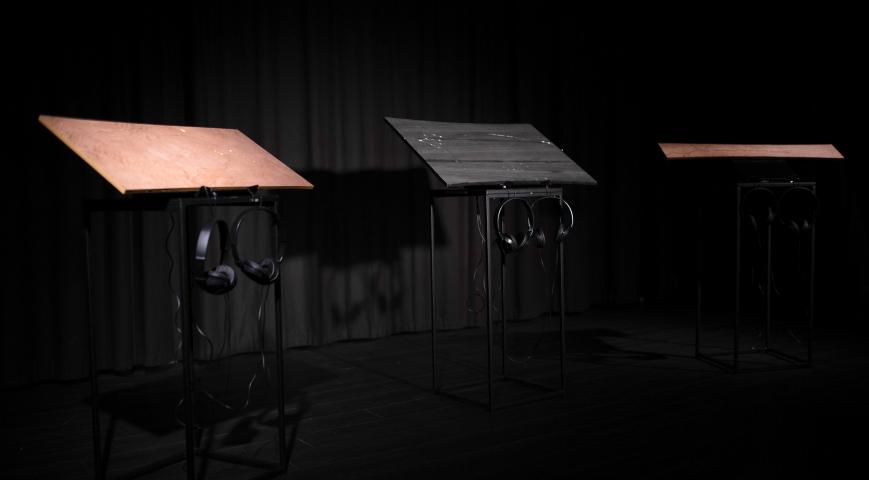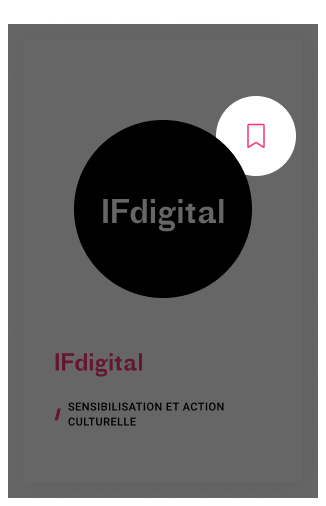Lukasa is an installation made up of imaginary maps in wood and metal, which produce sound and text when touched. The device is inspired by the engraved wooden tablets of the Luba people (Congo), and tells the story of an emblematic place, real or imaginary, in our present day. You'll find a motorway junction, a city, a fragment of desert...
Lukasa
Find out more
Lukasa is an installation made up of imaginary maps in wood and metal, which produce sound and text when touched. The device is inspired by the engraved wooden tablets of the Luba people (Congo), which are studded with beads, shells and pieces of metal. Like an imaginary map, they represent characters, places and events, and serve as a support for the storyteller's narrative.
The Lukasa installation appropriates this idea of an object as a medium for oral tradition. When you touch the different cards, music and poetic text tell the story of an emblematic place, real or imagined, in our present day. A motorway junction, a city, a fragment of desert... By manipulating the device, the spectator circulates voice and music and creates his or her own sound configurations. In this way, they actively explore the different locations that correspond to the different facets of the text. Lukasa's architecture, which combines old-fashioned devices with digital technology, is a reflection of our own hyper-connected world, with its labyrinths, myths, solitudes and hopes...
By depicting imaginary places, Lukasa is in keeping with the theme of the sound map, already touched on in some of my earlier works (Toposonic: a geolocalised sound work; Nexploria: a virtual territory to be explored through sound and text). There's one aspect of maps that fascinates me: they're a kind of reflection of the real world, a stand-in for reality that nonetheless has its own laws, codes and poetry, making it an almost autonomous space.
The sound world of Lukasa is based on electroacoustic music, using recordings, synthesised sounds and instrumental sounds.
Many interactive works are designed for sighted audiences, in particular through the use of screens. Lukasa, on the other hand, gives priority to hearing and touch: the text, the music, the granularity of the wood and the coldness of the metal inserts make it a rich experience for sighted and non-sighted people alike.
Votre contact
Merci pour votre contribution.
Vous serez informés de sa publication ou d’une éventuelle demande de compléments.





